
CONTENTS
 The
American moon landing – July 1969 The
American moon landing – July 1969
 Teddy
Kennedy's troubles at Chappaquiddick – July 1969 Teddy
Kennedy's troubles at Chappaquiddick – July 1969
 The senseless
Manson murders – August 9 and 10, 1969 The senseless
Manson murders – August 9 and 10, 1969
 The
Woodstock Festival – August 15-17, 1969 The
Woodstock Festival – August 15-17, 1969
 The
tough, even terrible, down side of "hippie freedom" The
tough, even terrible, down side of "hippie freedom"
 The Boomers still rage against the war – and American
culture in general The Boomers still rage against the war – and American
culture in general The news from Vietnam grows ever grimmer: the "My Lai
Massacre" The news from Vietnam grows ever grimmer: the "My Lai
Massacre"
The textual material on this webpage is drawn directly from my work
America – The Covenant Nation © 2021, Volume Two, pages 208-212.
|


|
A
MAJOR BOOST FOR AMERICAN SPIRITS WAS THE LANDING OF AMERICAN
ASTRONAUTS
ON THE MOON –
JULY
20, 1969
|

|
|

|
The Apollo 11 Moon Landing (July 20, 1969).
But Americans found themselves thrilled to hear
(and see) the news that the lunar module Eagle of the American
spaceship, Apollo 11, had successfully landed on the moon, and two
American astronauts had the privilege of walking on the moon,
collecting moon samples, and nearly a day later then taking off from
the moon for their return trip back to earth.
The event marked the ultimate victory of America in the space race that
had been set off back in 1957 with the Russian launch of Sputnik I.
Nixon was pleased to be the President able to announce the success of
this highly risky venture, but it was the result of the work of
Eisenhower, Kennedy and Johnson before him ... which Nixon well
acknowledged.
In a way this event marked the end of the space race. Other American
missions would be sent to the moon. But for all practical purposes the
race was over. America had won, and the Soviets made no attempt at
demonstrating the value of a second-place finish behind America. They
would make no effort of their own to duplicate the event.
|

US Saturn booster
rocket
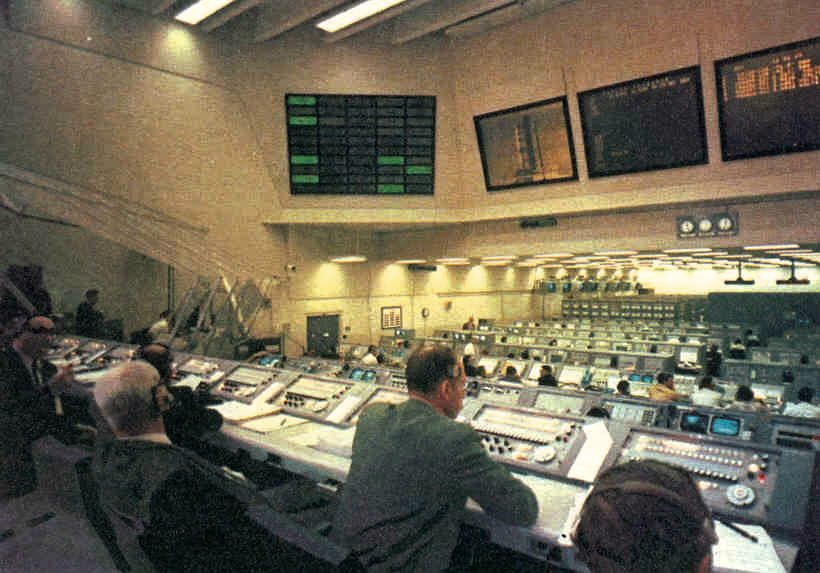
Launch Control Center at
Cape Kennedy
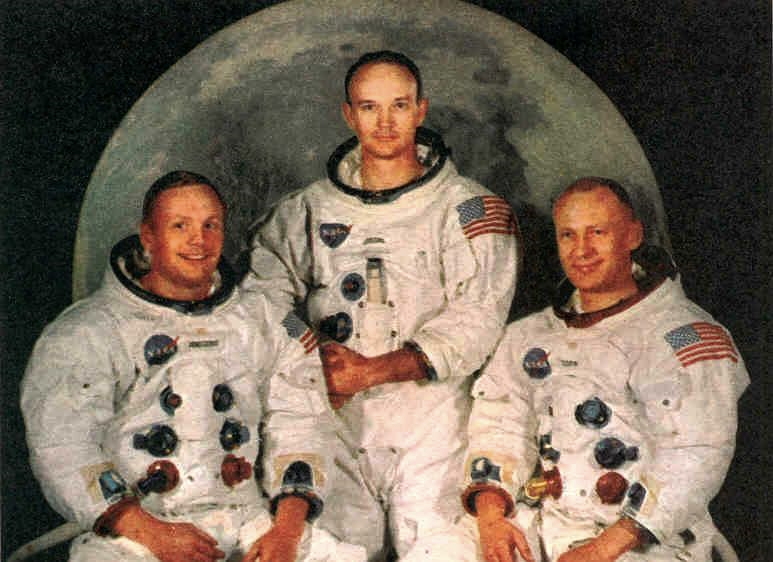
Crew of the Apollo
11
(left to right: Neil
Armstrong, commander; Michael Collins, pilot of command module
Columbia;
Edwin "Buz" Aldrin, Jr.,
pilot of the lunar module Eagle)
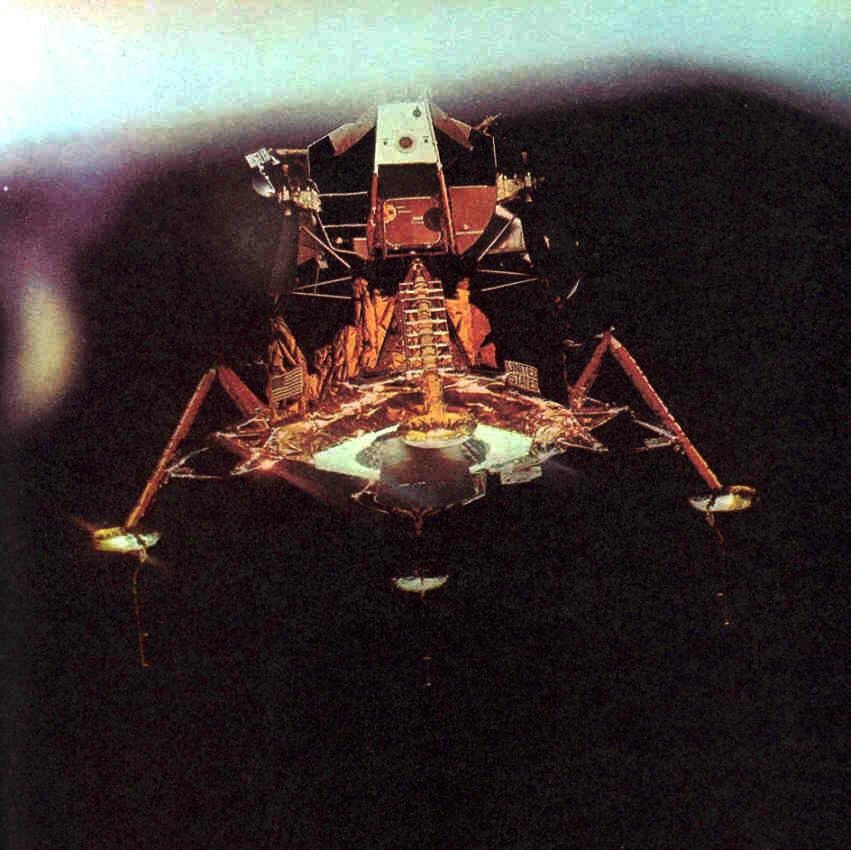
The Lunar module
Eagle
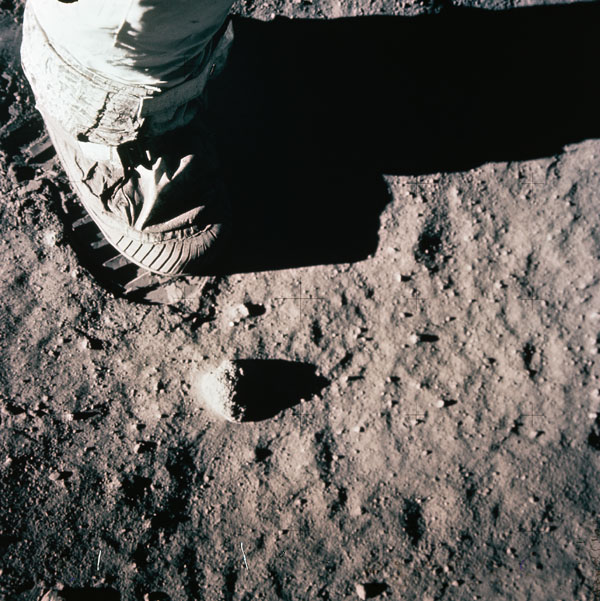
"Close-up view of an astronaut's
leg and foot and footprint in the lunar soil,
photographed with a 70mm
lunar surface camera during the Apollo 11 lunar surface
extravehicular activity.
Astronaut Michael Collins, command module pilot, remained
with the Command Service
Modules in lunar orbit while Astronauts Neil A. Armstrong,
commander, and Edwin E.
Aldrin, Jr., lunar module pilot, explored the Moon."
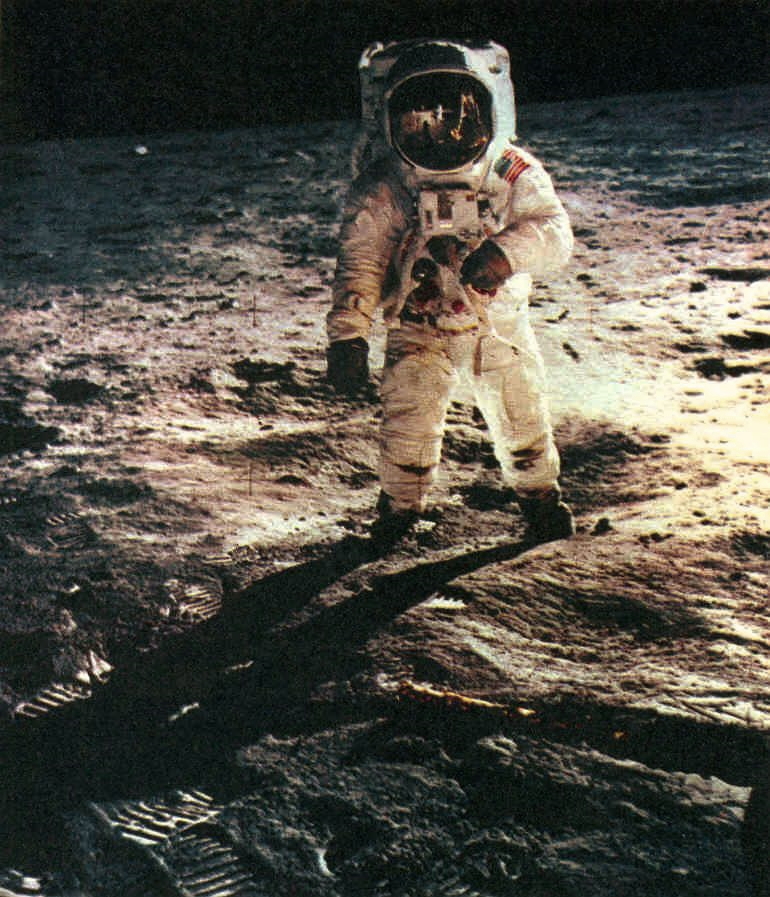
Picture of Aldrin taken by
Armstrong
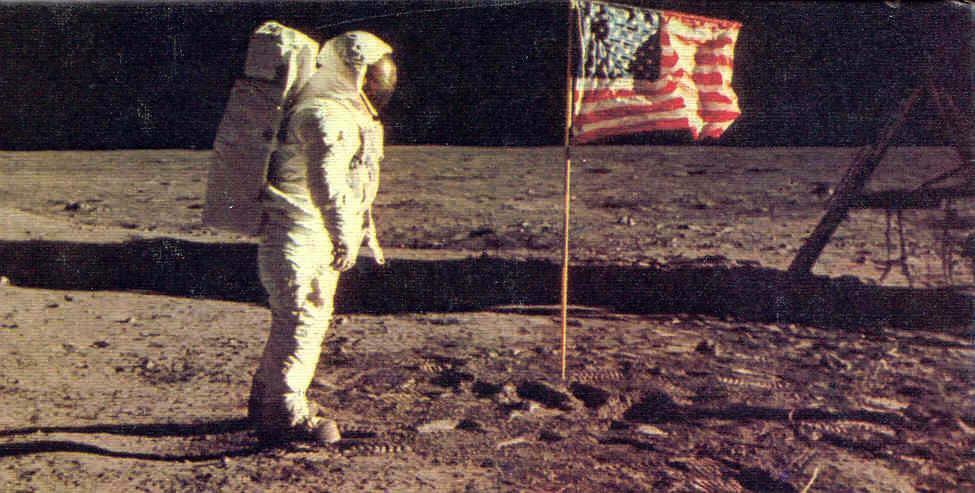
Aldrin and US flag on the
moon


|
TEDDY
KENNEDY'S TROUBLES AT CHAPPAQUIDDICK
(JULY
1969)
|

|
|
Just the day previous to
the moon landing another Kennedy tragedy occurred,
this time
with the last
surviving brother Teddy. A former Bobby Kennedy campaign worker
drowned (or suffocated) on July 19 (1969) when Ted's car went off a small bridge
leading from Cape Cod to
Chappaquiddick Island. Teddy got out. She did not.
|
Meanwhile another event occurring at almost the same time would come to have a major impact on the shaping of American politics.
Chappaquiddick was a small island off the
Massachusetts coast where two days before the moon landing, on the
night of July 18 (1969), the car of Massachusetts Senator Ted Kennedy1
drove off a small wooden bridge leading to the island, turning over in
the water and trapping Patty Jo Kopechne, a very pretty young "Boiler
Room Girl" (a member of one of deceased brother Bobby's campaign
groups) who was with him in the car. Patty Jo drowned (or possibly
simply suffocated after having been trapped in the car for some time).
Kennedy's explanations of the whats and
whys didn't make much sense (why he got out and she didn't; why she was
in the car in the first place; why they were headed in the direction
they were going; why he didn't go immediately for help; why he didn't
report the incident to the police until the next morning, when they had
already discovered her body).
Kennedy soon pled guilty and was issued a
two-month prison sentence for "having left the scene of the accident,"
a sentence which the judge suspended anyway. Then an inquest into the
accident was initiated the following January (1970) and in May a
Massachusetts grand jury found that Kennedy had not committed any
punishable offense (not even for leaving the scene of an accident!).
Politically speaking, Kennedy laid low...
well, sort of that is, because he was one of the forces trying to have
the country led from the "democratic" Congress rather than the
"imperialist" White House. Indeed, if he, as a typically ambitious
Kennedy, still had any plans to direct the country after the shame of
Chappaquiddick, he really had no other option anyway.
At the same time, what was also truly
amazing was how quickly the Democratic Party gave him a moral "pass" on
this event. The Kennedy name had real power, like the European royal
dynasties of Habsburgs, Valois, Bourbons, Tudors, Stuarts, Romanovs,
etc. Even in democratic America names like Adams and Roosevelt (and
eventually Bush) had a special power. And in Massachusetts, the name
Kennedy would continue to have unchallenged power, all the way up until
Senator Ted Kennedy's death forty years later in 2009 (still in office
as Senator at the time).
1The always-problematic younger brother of John and Bobby Kennedy.
|
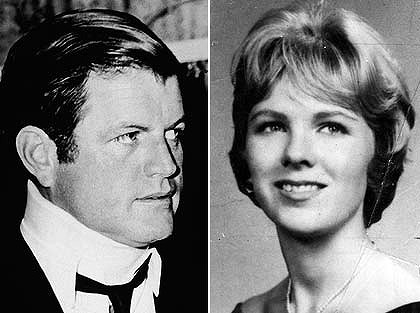
Ted Kennedy and Mary Jo
Kopechne
Kopechne: Caldwell
College yearbook
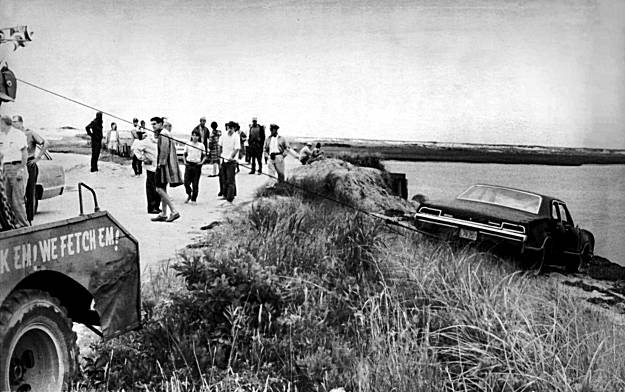
Kennedy's car towed from
Chappaquiddick Sound
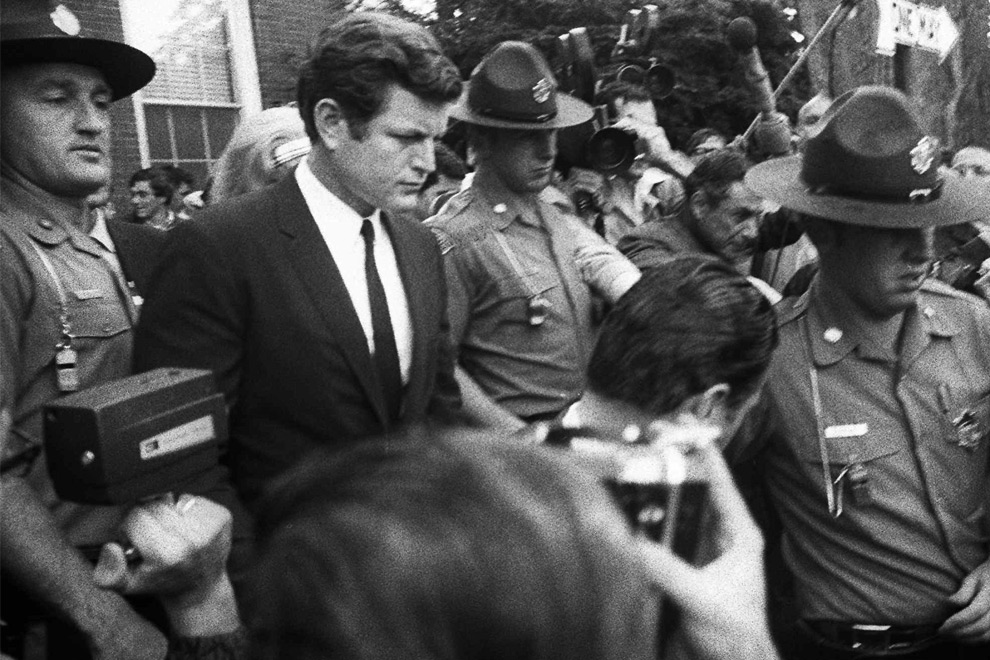
Kennedy being led away by
police for failure to report the accident
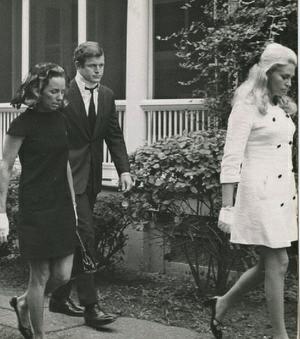
Kennedy with his sister-in-law
Ethel and wife (ahead of him) at the Kopechne funeral


|
AND
THE BRUTALITY OF THE NEW YOUTH CULTURE MANIFESTS ITSELF IN THE
SENSELESS
MANSON MURDERS – AUGUST
1969
|

|
|
|
The Manson Murders, and arrest of the "Manson Family"
Sleazy Charles Manson, who convinced a number of
young impressionable minds that he was some kind of very special
spiritual guru, demonstrated how low hippie communal life could go.
He was born into a troubled domestic
environment and grew up involved in a life of petty crime (which had
him in and out of prison). Later, as the hippie movement advanced
through the 1960s, he took on the airs of being a songwriter, and
passed himself off in Berkeley, California, which was becoming
America's hippie center, as something of a hippie "guru." As a guru, he
organized around himself a small commune of vulnerable girls, and moved
them into the home (originally uninvited but ultimately accepting) of
Beach Boy singer Dennis Wilson. This brought Mason and his "Family"
into contact with the professional world of music. But finally Wilson
forced Manson and the Family out of his home, and the Family eventually
relocated themselves at a run-down California ranch. Manson's obsession
with the Beatles and their music ultimately moved Manson to an
apocalyptic spirit, as he began preparing the Family for a great race
war ("Helter Skelter"), in which the Family would emerge as the supreme
directors of a new era.
By 1969 Manson was convinced that it was
time to move on this grand event, and set off down a trail of gruesome,
semi-ritualistic murder, performed by the members of the Family
(principally Tex Watson, Susan Atkins, and Patricia Krenwinkel) at
Manson's request. After midnight on August 9, 1969 the Family broke
into the home of movie producer Roman Polanski (who himself was away in
London) and murdered the inhabitants of the home (most notably
Polanski's wife, pregnant actress Sharon Tate) by shootings and
multiple stabbings, leaving cryptic messages written on the walls and
mirrors of the home. The next evening the same group, now accompanied
by Manson himself, and Leslie Van Houten and Steve Grogan, continued
the murder rampage by attacking and killing a supermarket executive,
Leno LaBianca and his wife in their home, again in a gruesome,
ritualistic fashion.
Soon thereafter (mid-October) Manson and
members of his Family were arrested, but at the time only for multiple
car thefts (stealing VW minibusses and converting them into dune
buggies). Soon connections between Manson and his Family and the
murders began to appear, and Manson and members of his Family were
charged with murder.
The trial (which began in June of 1970)
was a national sensation, the murders having been so brutal and
pointless, and Manson and his Family representing so clearly the dead
end of the hippie life of drugs and fantasy.
|
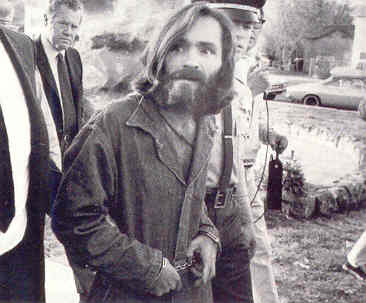
Charles Manson arrested -
1969
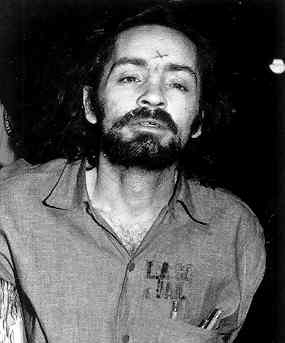
Charles Manson of Death Valley
- December 1969
He demonstrated how easy
it is to control the thoughts and actions of others simply through his
own bizarre, but forceful
personality. But Boomers were particularly
susceptible, being ungrounded in any fundamental ethical principles except “be free” ... and
being
ready to believe any new or fascinating idea, no matter how bizarre or
even grotesque. |
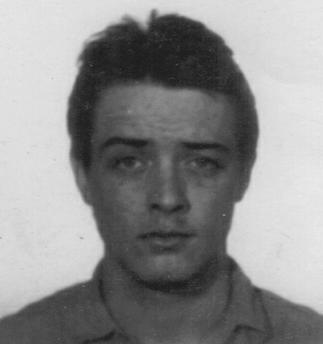
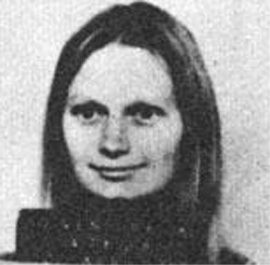
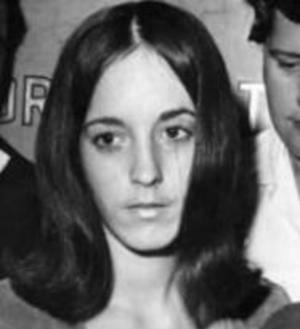
Members of the Manson Family,
murderer Robert Beausoleil – and Mary Bruner and Susan Atkins
who accompanied him – in
the capture, torture and murder of musician Gary Hinman – July 25, 1969
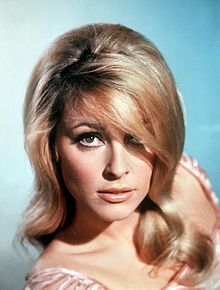
Actress Sharon Tate, 8½
- month pregnant wife of movie producer Roman Polanski, brutally
murdered (along with four others
at the Polanski house) by the "Manson Family" the night of
August 9, 1969
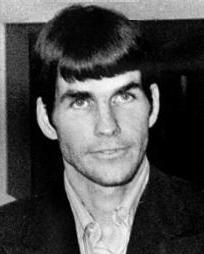

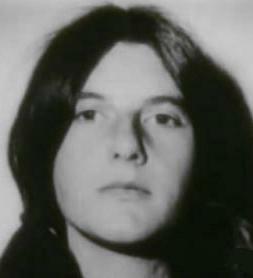
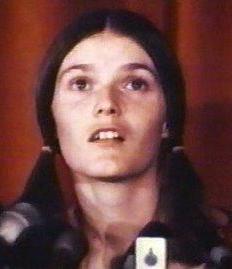
The Polanski house
murderers:
Tex Watson, Susan Atkins and Patricia Krenwinkel;
Linda Kassabian (right)
was the driver
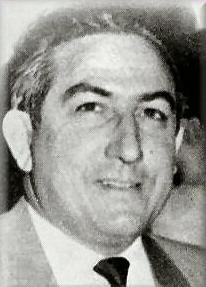
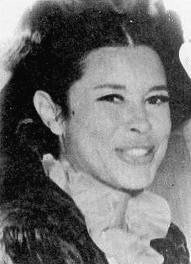
Leno and Rosemary LaBianca
murdered (a totally random brutal killing)
by the Manson Family the next
evening (August 10)
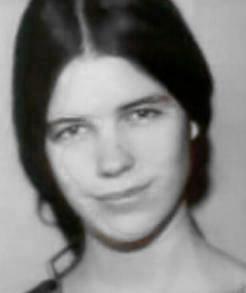
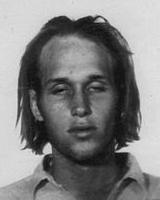
Lesli Van Houten and Steve
Grogan, plus Manson, ("to make sure it's done right")
joined the Polanski murder
team the next night to murder the LaBiancas in the same grizzly
way
Another member of the Manson family, Lynette Alice "Squeaky" Fromme,
was not part of the 1969 Tate-LaBianca murders ... but later, on September 15, 1975,
was caught with a gun aimed at U.S. President Ford
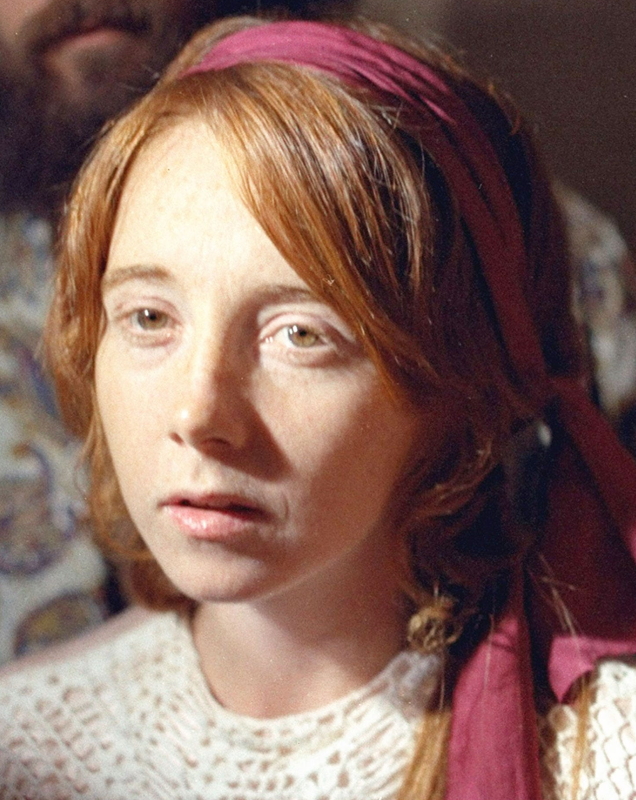


|
THE
WOODSTOCK FESTIVAL – AUGUST 15-17,
1969
|

|
|
Much of the nation's youth
remain as distant as ever from this world of the adult
"Establishment" – given such dramatic expression
at the Woodstock Festival
near Bethel, New York, in mid-August
|
In mid-August of 1969 nearly a half-million Boomer
youth congregated at a 600-acre farm in Upstate New York (Woodstock) to
enjoy a three-day-long rock concert featuring a huge number of the
major music stars of the day. But the event was more than just a music
festival, it was the very clear expression of the emerging Boomer
culture in all its ways, especially its idealization of both social
harmony and social action, supposedly all about "love and peace" –
love, which often took on a distinctly sexual character, and peace,
which frequently involved drug use in order to accentuate the spiritual
"coming together" of the very self-focused Boomers.
Above all, it helped to give precise
definition as to what it meant to be a Boomer, in dramatic distinction
to the Middle-Class ways of the Boomers' parents, which in so many ways
the Boomers departed from as far as possible – as a testimony as to how
far they had come in securing a new freedom for themselves as a rising
generation.
|
The Woodstock Music and Art
Fair – August 15-17, 1969
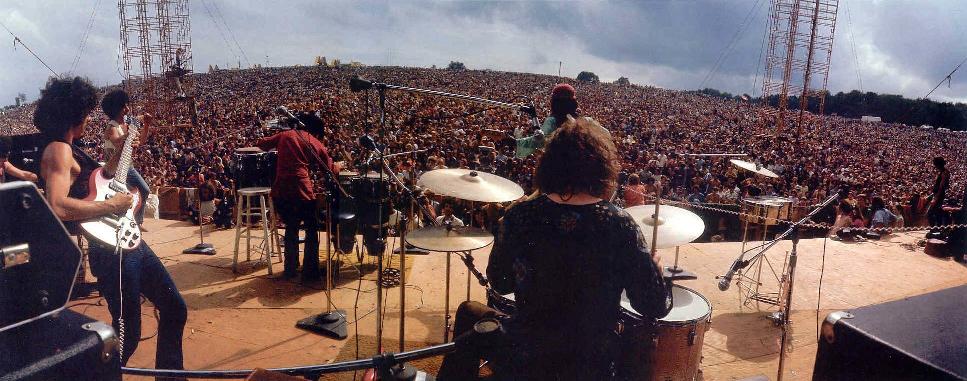
Woodstock – August
1969
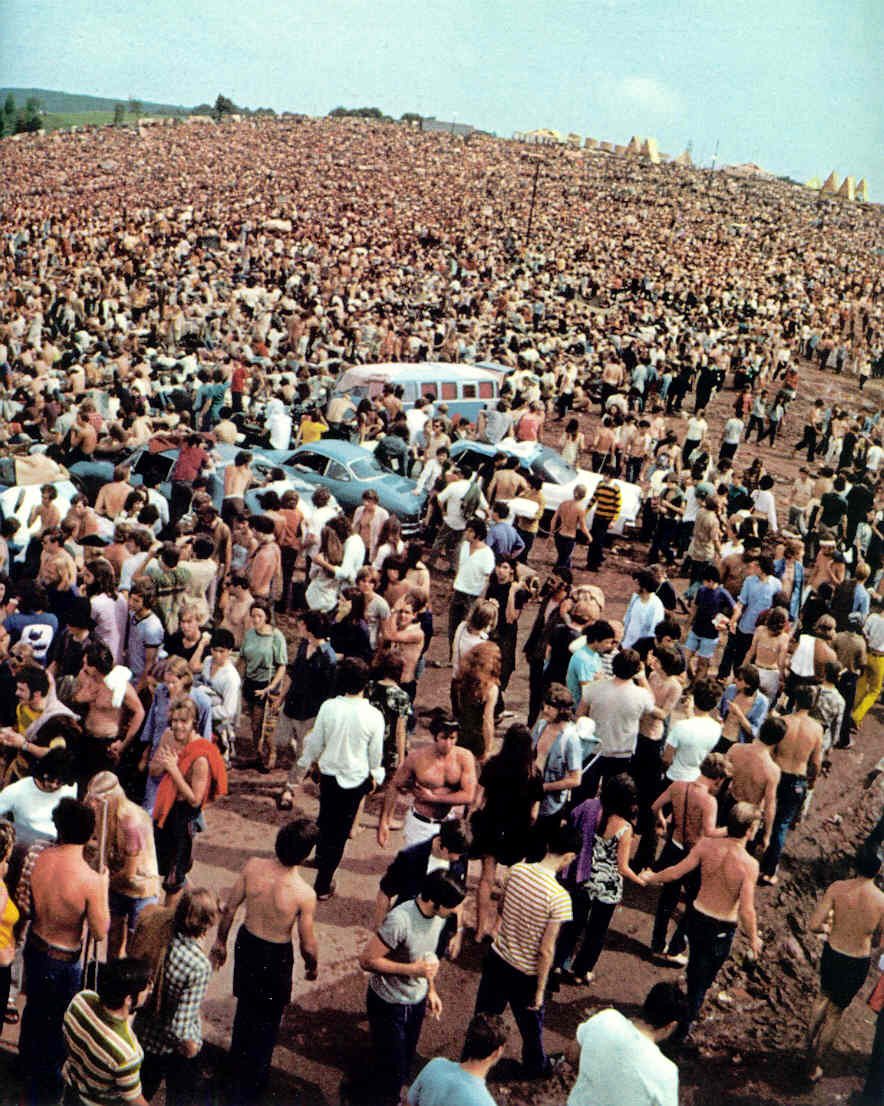
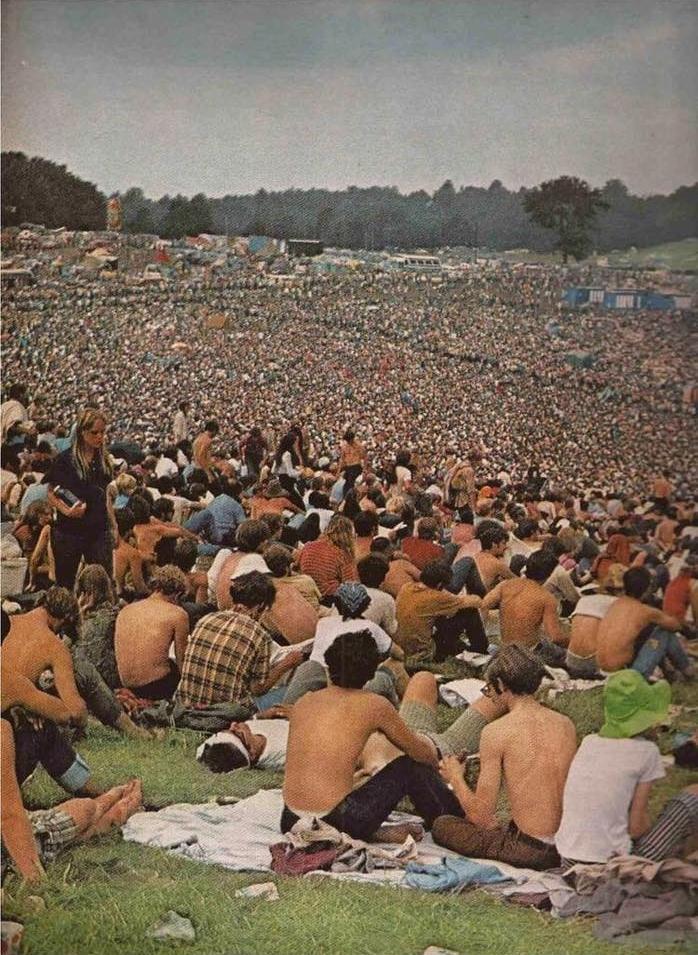
Some of the 400,000+ youth
who gathered for the 3-day festival
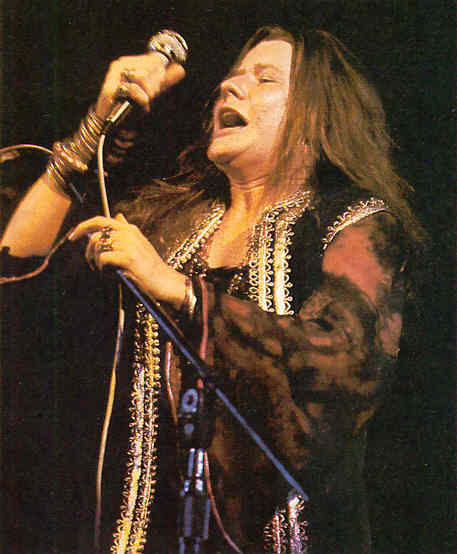
Janis Joplin – Woodstock
- August 1969
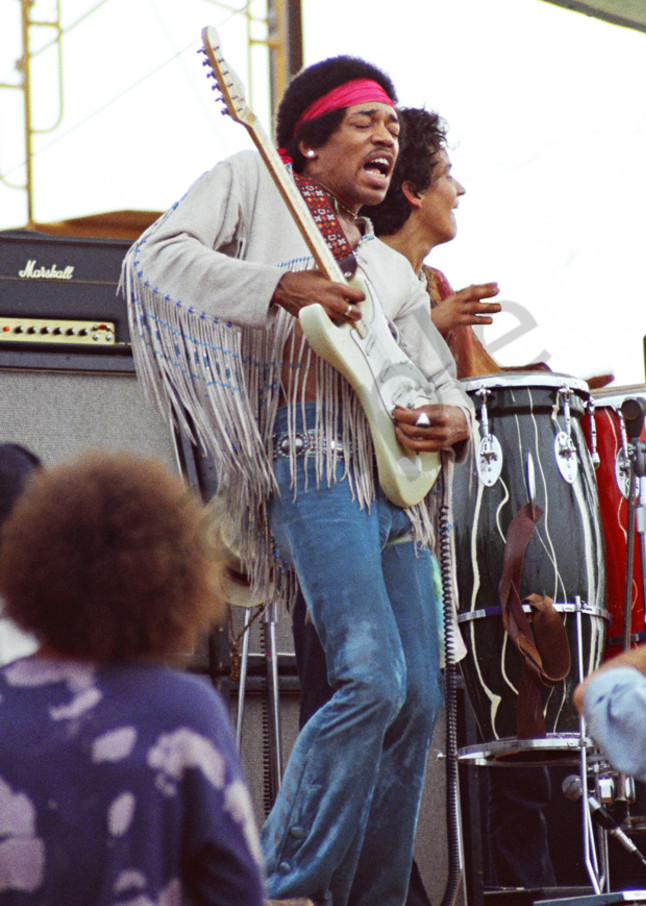
Jimi Hendrix playing at the Woodstock Festival, August 18, 1969
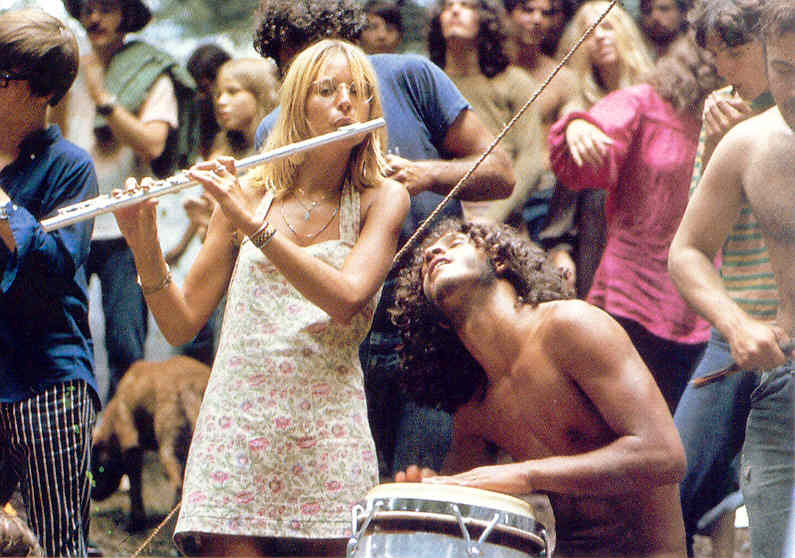
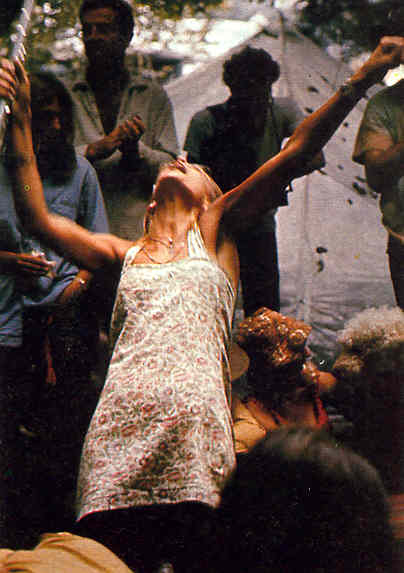
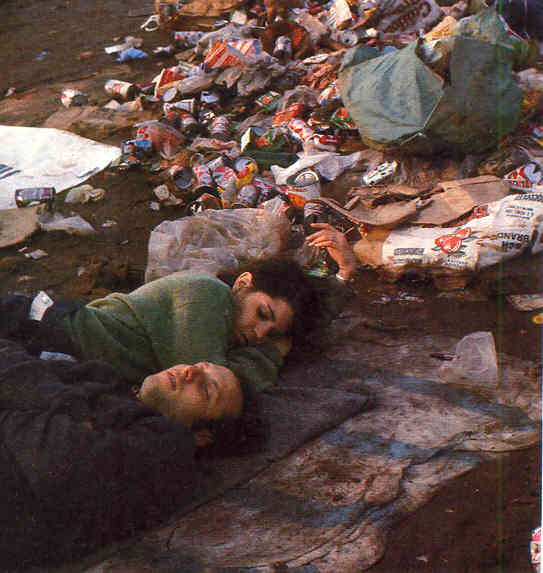
Scenes from Woodstock – August
1969
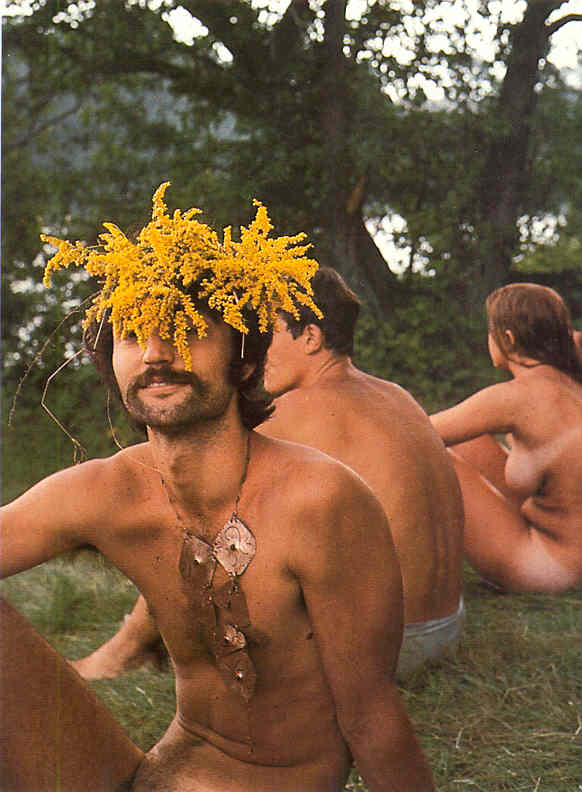
In the buff at Leon's Lake
- Woodstock – August 1969
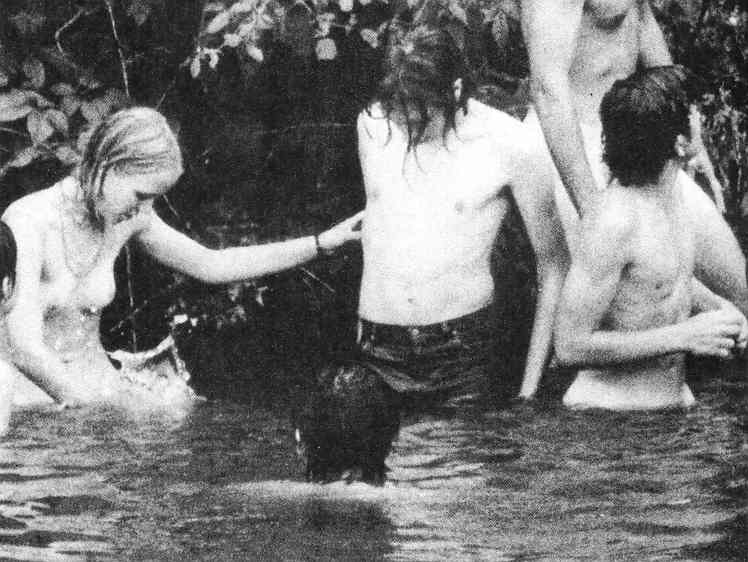
Skinny dipping at Leon's
Lake – Woodstock – August 1969
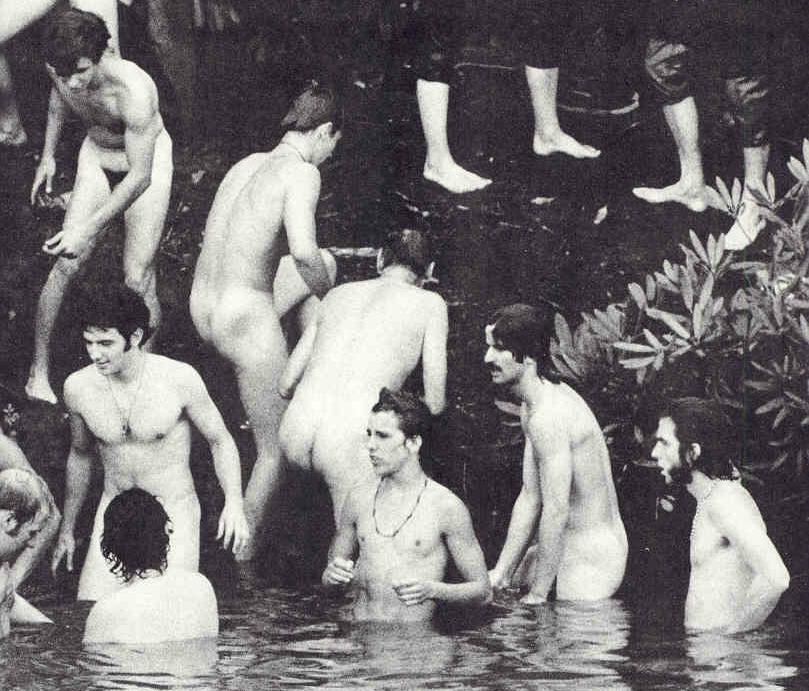
Skinny dipping at Leon's
Lake – Woodstock – August 1969
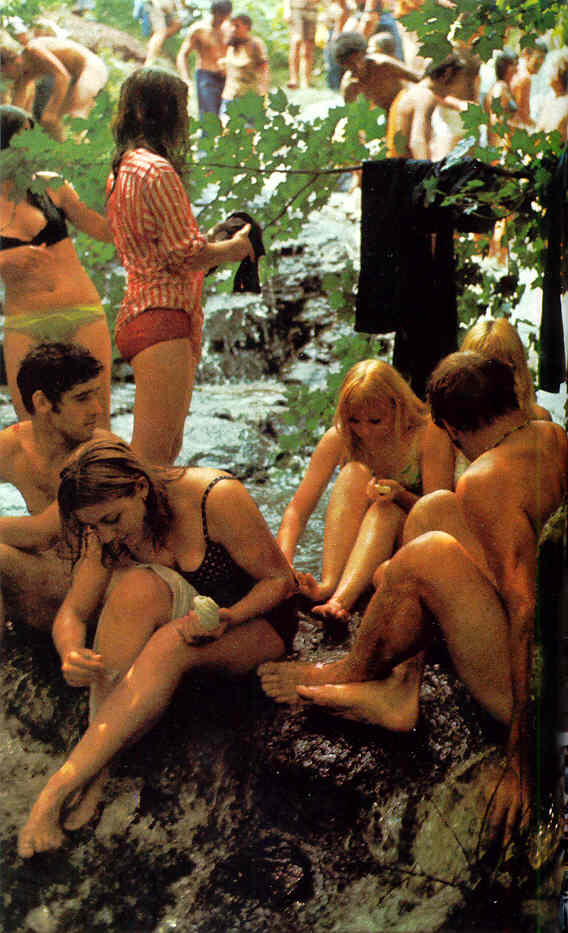
Scenes from
Woodstock
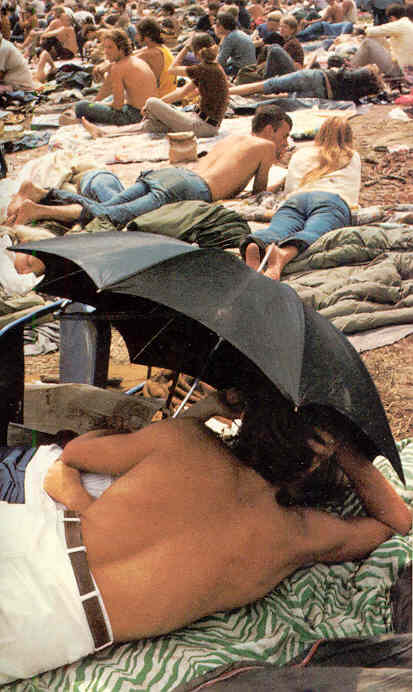
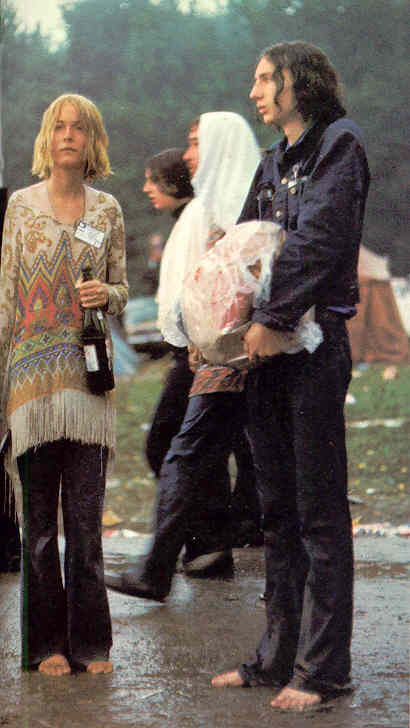
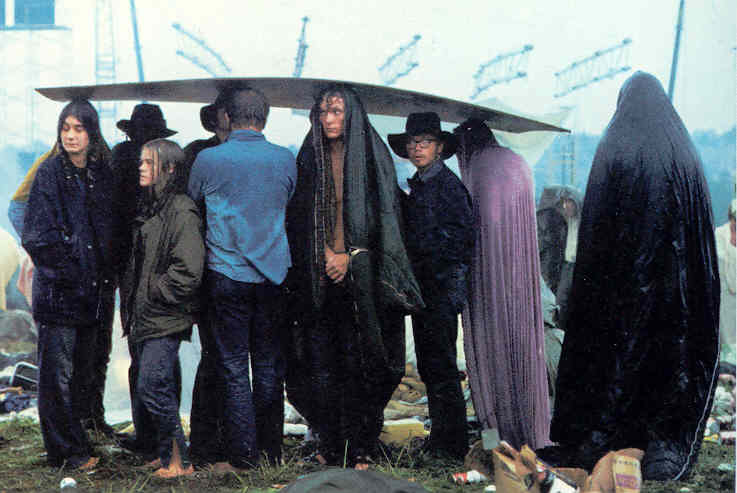
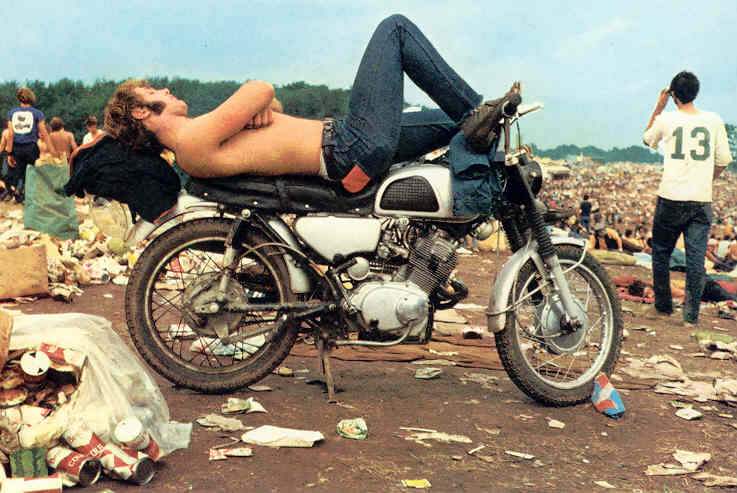
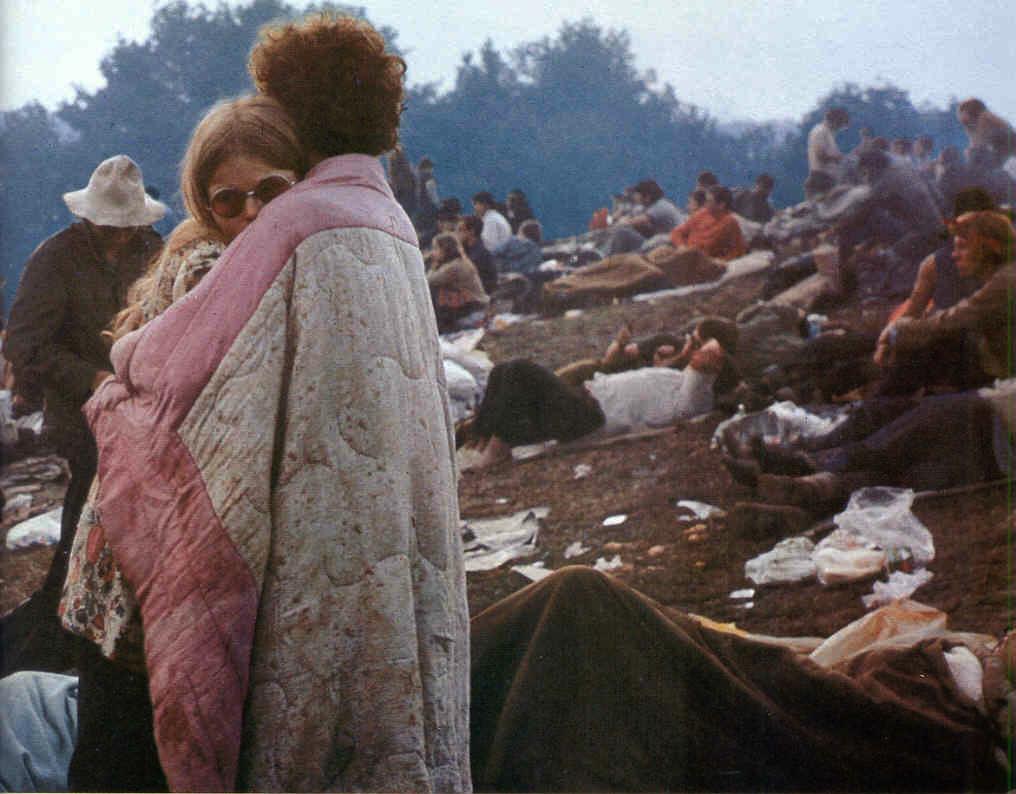


|
THE
ROUGH, EVEN TERRIBLE, DOWN SIDE
OF "HIPPIE FREEDOM"
|

|
|
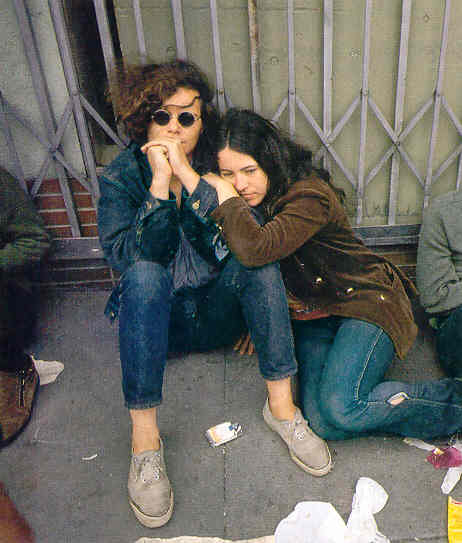
Hippie life on the streets
of San Francisco – late 1960s
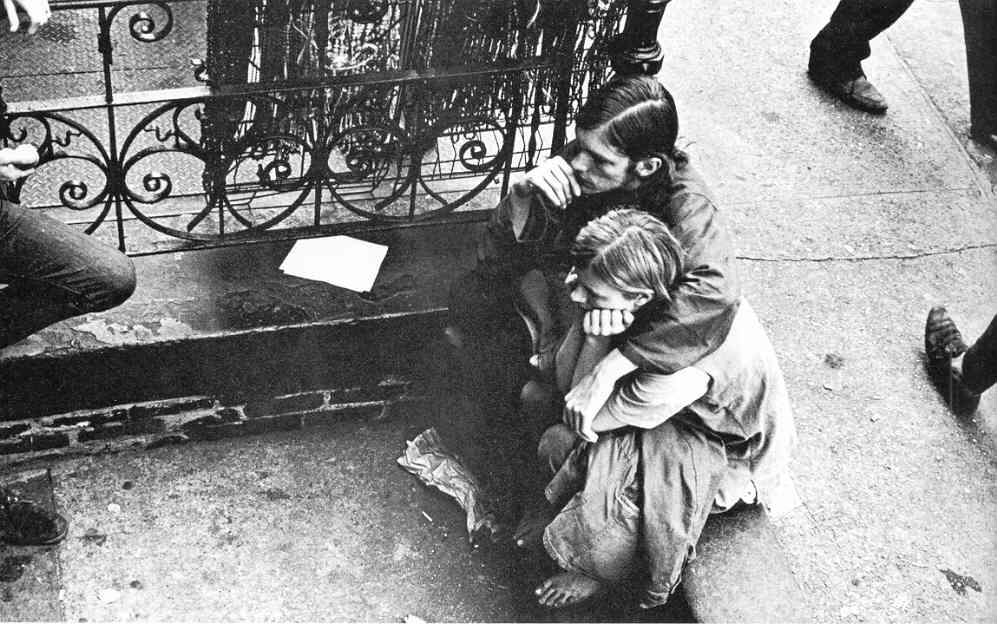
All is not easy for hippies
- scene from New York City's East Village
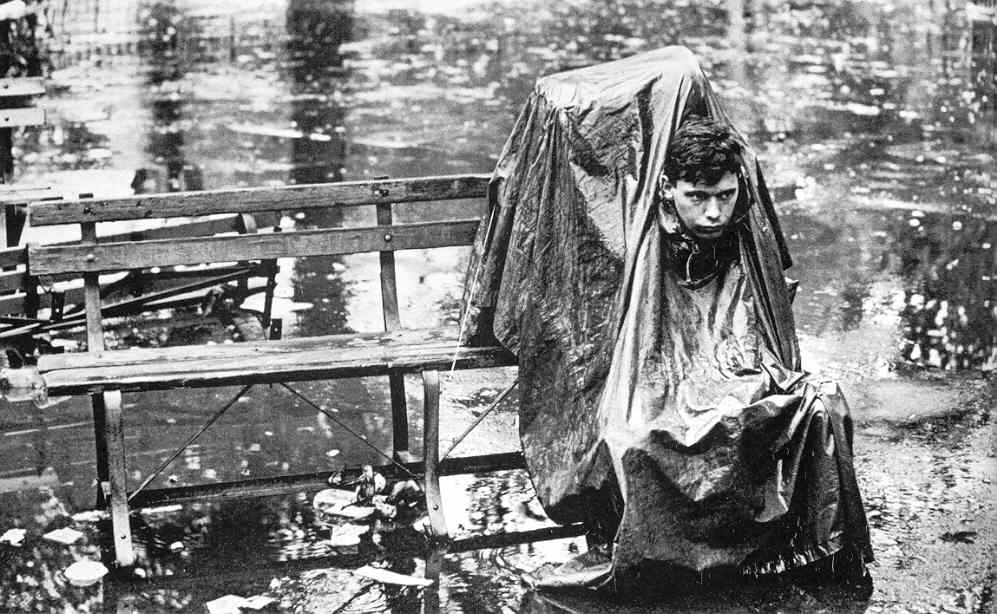
All is not easy for hippies
- scene from New York City's East Village


|
BUT
THE BOOMERS HAVE NOT LOST ANY OF THEIR RAGE AGAINST THE WAR – AND
AMERICAN
CULTURE IN GENERAL
|

|
|
In 1969 the radical group
(part of the leftist Students for a Democratic Society – SDS)
called for 'Days of Rage
(October 8-11) in Chicago, in protest of the war and in part
in protest against the trial
of the "Gang of 8" currently underway in Chicago.
|
The "Days of Rage" (October 8-11, 1969)
In 1969 the radical Boomer group, the "Weathermen,"2
called for "Days of Rage" (October 8-11) in Chicago, in protest against
the Vietnam war, and in part in protest against the trial then underway
in Chicago of the Chicago Eight (reduced ultimately to the Chicago
Seven).3
Only about 800 protesters showed up on
the first day, as opposed to about 2,000 Chicago police confronting
them. There was much brave talk about confronting the Fascist police,
even the readiness to lose some of the lives of the protesters in order
to advance the cause of freedom. Then the group began their march,
smashing store and car windows, overturning cars and attacking
bystanders (breaking the neck of a Chicago lawyer who had been watching
the event) as they went, until they ran into a cordon of police
officers and the two groups clashed. Sixty-eight Weathermen were
arrested, a number injured, including twenty-eight policemen, and six
of the protesters were shot.
The next day the protest continued, and
then the next day and the next. The number of participants dwindled to
less than half the original numbers in those next days. Of the total
number of participants, 280 weathermen ended up being arrested for
participation in the Days of Rage.
What this all had achieved was unclear.
But it spoke volumes about the way Boomer youth were so easily
mobilized for action, violent action if necessary, in pursuit of some
social ideal, any social ideal, as long as it was indeed "ideal"
(meaning: more of the nature of a slogan demanding a strong show of
support rather than any well thought-through social policy).
The development of Boomer political logic
And even though the street-based protest
movements would decline in number in the 1970s (although there would
still remain a number of the more "professional" of the Boomer
protesters who would continue to show up for almost any kind of a
demonstration, anywhere and for any cause), the crusading spirit of the
Boomers would in general continue to impact Boomer ideas of how
American politics ought to proceed. This would even show up in the new
social-political and even cultural attitudes that would find their way into
Congress, where politics would become more and more a matter of
bringing ideological opponents down to humiliating public defeat,
rather than undertaking the art of political compromise as the
foundation of real social progress. This latter and well-proven but
old-fashioned political style would somehow get lost in the new
political atmosphere.
2The
Weathermen were a faction of the Students for a Democratic Society
(SDS) created to spark revolution or even, as they claimed, a state of
war against "U.S. imperialism" – their name Weathermen taken from a
1965 Bob Dylan song in which appears the phrase "You don't need a
weatherman to know which way the wind blows." During the first half of
the 1970s they would conduct a bombing campaign on various government
buildings and banks in protest against the Vietnam war – and American
"imperialist" culture in general.
3These
were the "Yippie" leaders who inspired the Boomer riots at the 1968
Chicago National Convention – who were convicted of the crimes of
disturbing the peace, but who however on appeal had the convictions
overturned.
|
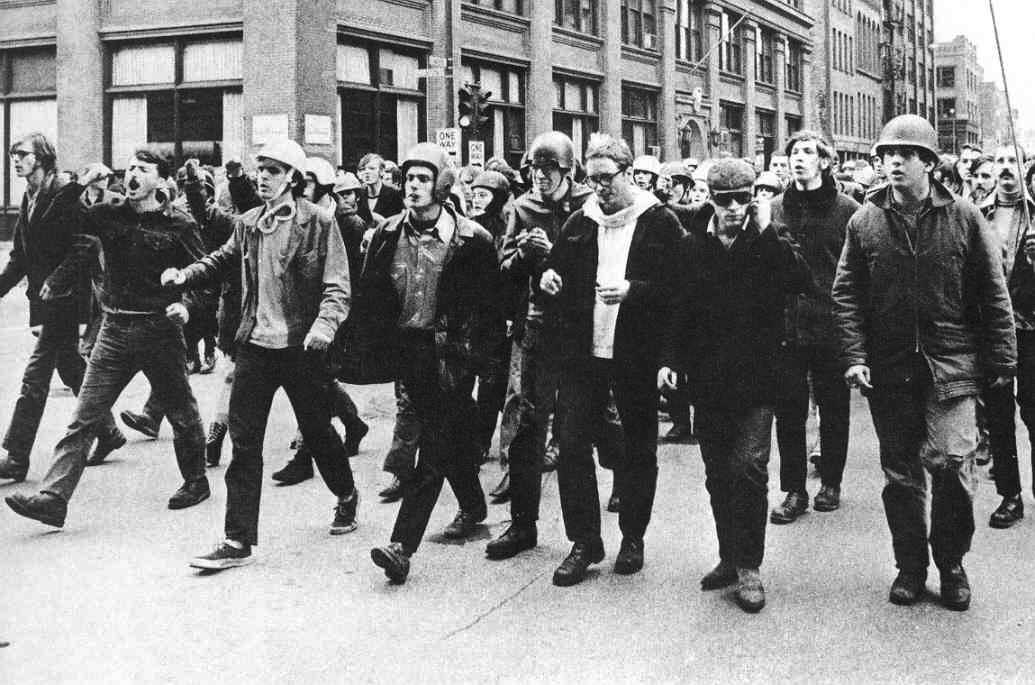
SDS/Weathermen marching in
Chicago during the "Days of Rage" – October 11, 1969
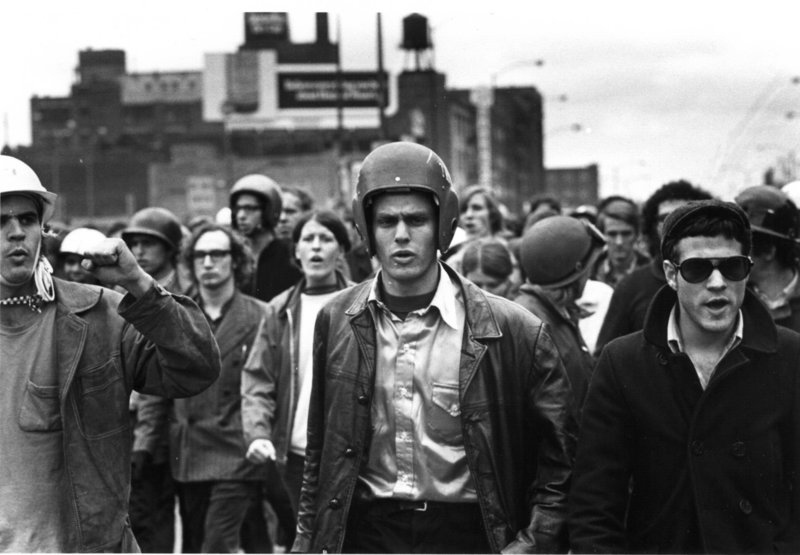
SDS/Weathermen marching in
Chicago during the "Days of Rage" – October 11, 1969
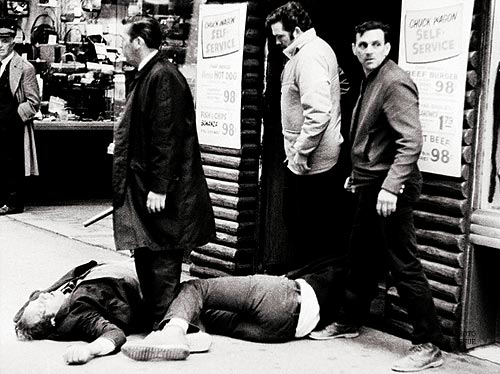
On the ground, a Chicago
lawyer (left) with a broken neck and a subdued weatherman (right)


|
MEANWHILE
THE NEWS FROM VIETNAM GROWS
EVER GRIMMER: THE "MY
LAI
MASSACRE"
|

|
|
In November of 1969 the American
press broke the story of the slaughter in 1968 by
American soldiers of hundreds of Vietnamese
civilians in the village of My Lai
|
Another event to rock the country at about the
same time was the revelation by the nation's press in November
concerning what American soldiers had done to an entire Vietnamese
village (My Lai) when in March of the previous year, as part of the
American retaliatory response to the Tet offensive, American soldiers
entered a village where the villagers were getting ready for market
day, and, under the orders of their officers, while encountering no
enemy action, proceeded nonetheless over the period of a full morning
to execute the villagers, men, women and children (from 350 to 500 as
the best estimate of those killed), based solely on the suspicion that
they had been harboring Viet Cong units.
Previously the military had attempted a
coverup of the tragedy, originally announcing the action as another
victory against the Viet Cong. But because of the complaints and
letters of some of the American soldiers shocked at the behavior of
their fellow soldiers, the story eventually became public, in fact by
November (1969) becoming front page news in America (complete with
horrifying pictures of the wholesale killing).
And thus it was that the chaotic 1960s came to a brutal close.
|
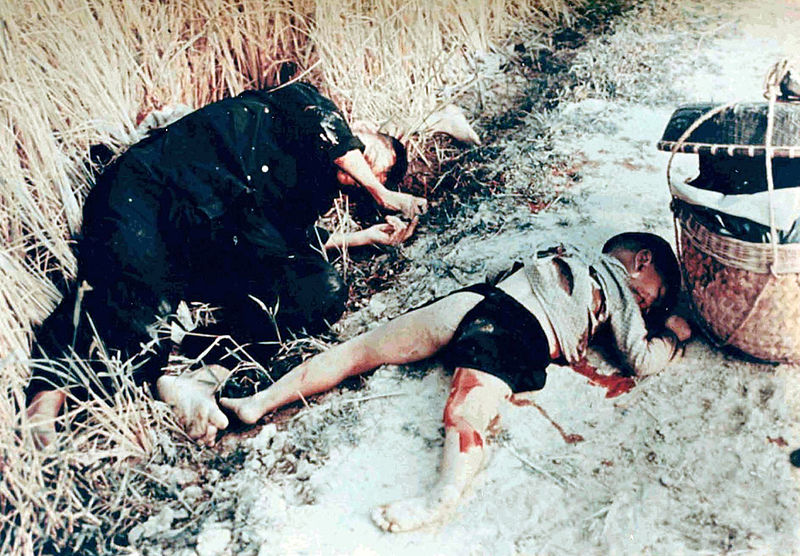
One of a number of photos
taken by Army photographer Ronald Haeberle
showing the atrocities at My
Lai
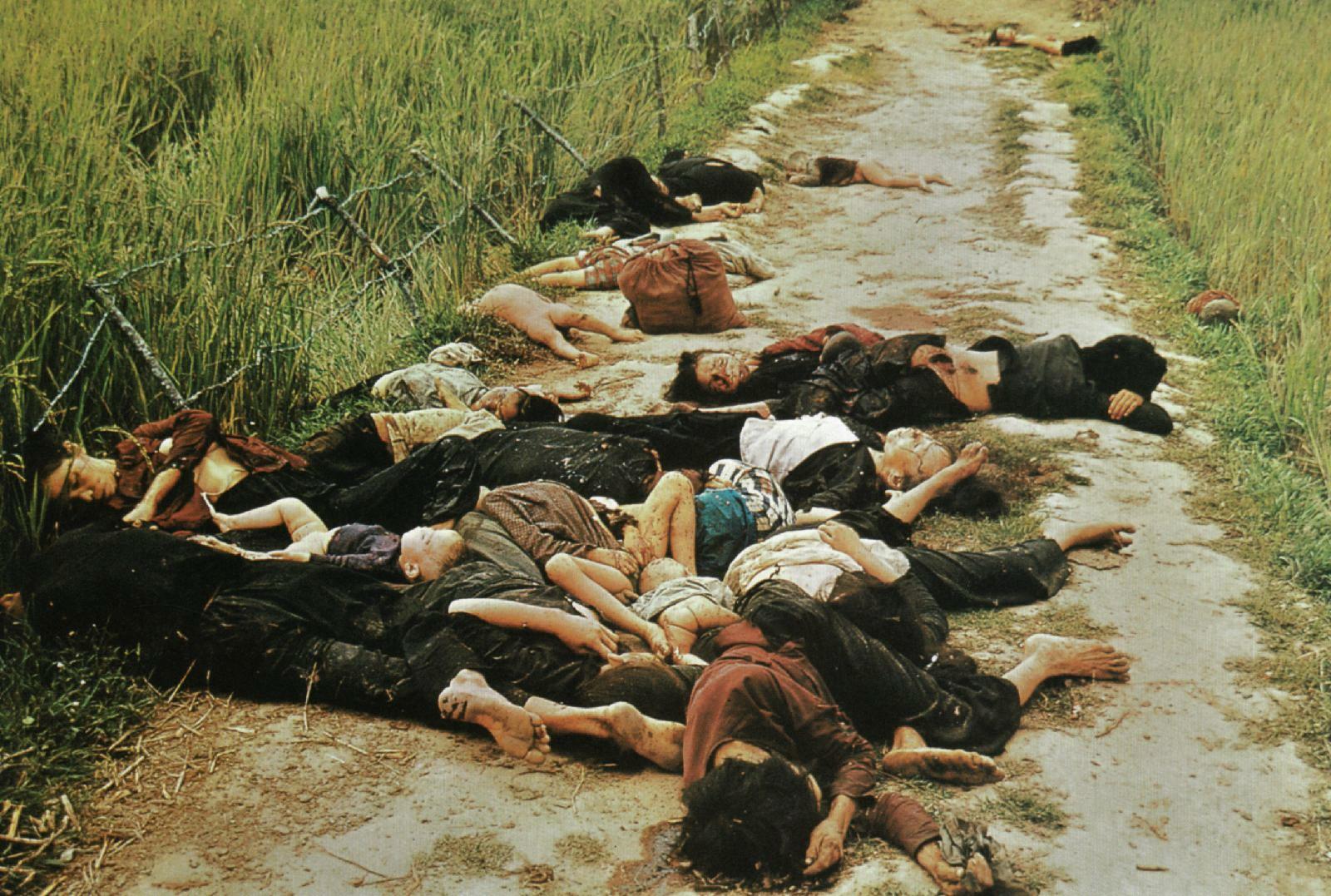
The March 16, 1968 event
was at first portrayed as a victory over enemy VC. But published
pictures
by Army photographer Ronald
Haeberle revealed that the "enemy" was mostly women and
children.
The estimated dead ran between
350 and 500 in number. Americans were outraged.
 Miles
H. Hodges
Miles
H. Hodges

 The
American moon landing – July 1969
The
American moon landing – July 1969
 Teddy
Kennedy's troubles at Chappaquiddick – July 1969
Teddy
Kennedy's troubles at Chappaquiddick – July 1969
 The senseless
Manson murders – August 9 and 10, 1969
The senseless
Manson murders – August 9 and 10, 1969
 The
Woodstock Festival – August 15-17, 1969
The
Woodstock Festival – August 15-17, 1969
 The
tough, even terrible, down side of "hippie freedom"
The
tough, even terrible, down side of "hippie freedom"
 The Boomers still rage against the war – and American
culture in general
The Boomers still rage against the war – and American
culture in general The news from Vietnam grows ever grimmer: the "My Lai
Massacre"
The news from Vietnam grows ever grimmer: the "My Lai
Massacre"
























































 Miles
H. Hodges
Miles
H. Hodges